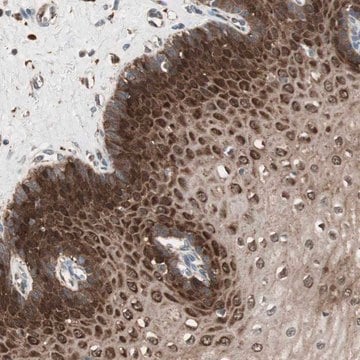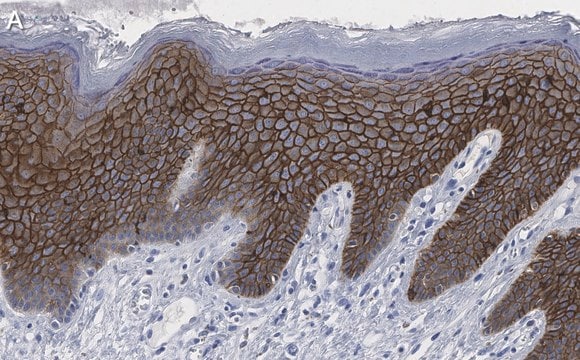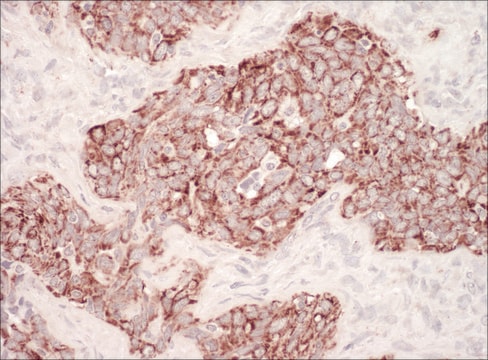SAB4300370
ANTI-TAU (MAPT) Antibody
rabbit polyclonal
Sinónimos:
Anti-DDPAC antibody produced in rabbit, Anti-FLJ31424 antibody produced in rabbit, Anti-FTDP-17 antibody produced in rabbit, Anti-MAPTL antibody produced in rabbit, Anti-microtubule-associated protein tau antibody produced in rabbit
Seleccione un Tamaño
MXP 6,905.00
Seleccione un Tamaño
About This Item
MXP 6,905.00
Productos recomendados
Nombre del producto
Anti-MAPT (Ab-356) antibody produced in rabbit, affinity isolated antibody
origen biológico
rabbit
Nivel de calidad
conjugado
unconjugated
forma del anticuerpo
affinity isolated antibody
tipo de anticuerpo
primary antibodies
clon
polyclonal
Formulario
buffered aqueous solution
mol peso
~48 kDa
~62 kDa
~78 kDa
reactividad de especies
human, mouse, rat
concentración
1 mg/mL
técnicas
indirect immunofluorescence: 1:100-1:200
isotipo
IgG
secuencia del inmunógeno
(I-G-S-L-D)
Nº de acceso NCBI
Nº de acceso UniProt
Condiciones de envío
wet ice
temp. de almacenamiento
−20°C
modificación del objetivo postraduccional
unmodified
Información sobre el gen
human ... MAPT(4137)
Categorías relacionadas
Descripción general
Inmunógeno
Acciones bioquímicas o fisiológicas
Características y beneficios
Descripción de destino
Forma física
¿No encuentra el producto adecuado?
Pruebe nuestro Herramienta de selección de productos.
Código de clase de almacenamiento
10 - Combustible liquids
Clase de riesgo para el agua (WGK)
WGK 1
Punto de inflamabilidad (°F)
Not applicable
Punto de inflamabilidad (°C)
Not applicable
Elija entre una de las versiones más recientes:
Certificados de análisis (COA)
¿No ve la versión correcta?
Si necesita una versión concreta, puede buscar un certificado específico por el número de lote.
¿Ya tiene este producto?
Encuentre la documentación para los productos que ha comprado recientemente en la Biblioteca de documentos.
Active Filters
Nuestro equipo de científicos tiene experiencia en todas las áreas de investigación: Ciencias de la vida, Ciencia de los materiales, Síntesis química, Cromatografía, Analítica y muchas otras.
Póngase en contacto con el Servicio técnico








